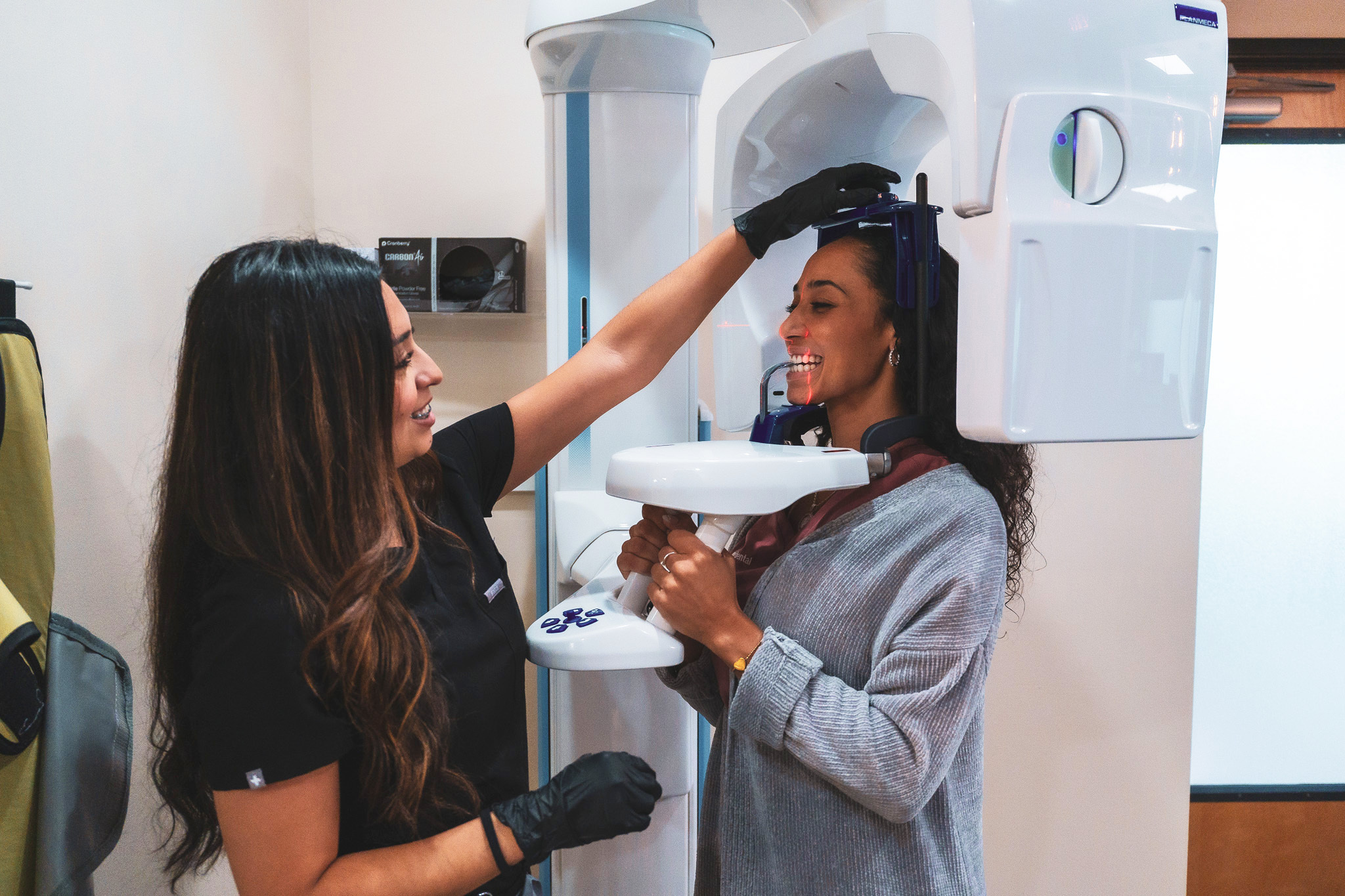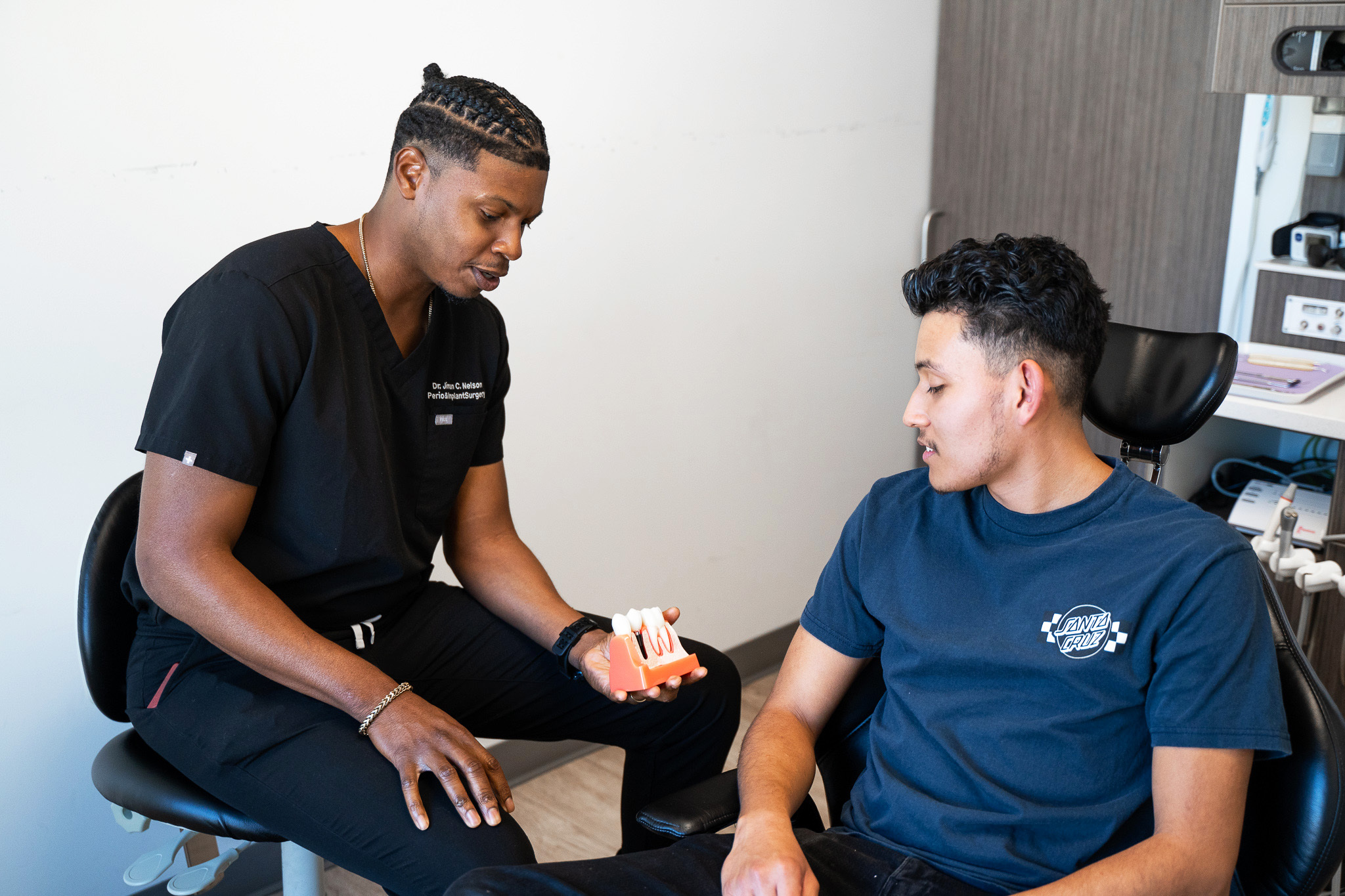Our patients love being treated at our locations, with consistent 5-star ratings across the board.
See what they have to say about our dentists and dental team.
Dentist in Houston, Texas
Houston – River Oaks, Galleria, Uptown
2400 Mid Ln #350, Houston, TX 77027
Phone: (713) 322-8442
Fax: (281) 516-8296
Monday 8AM–5PM
Tuesday 8AM–5PM
Wednesday 8AM–5PM
Thursday 8AM–5PM
Friday 8AM–5PM
Saturday 8AM–2PM
Sunday Closed
If you’re searching for a top-notch “dentist near me” in the Galleria/River Oaks area, your search ends here at URBN Dental in Uptown Houston. Located conveniently in the heart of this prestigious neighborhood, we are dedicated to providing exceptional dental care to patients seeking quality and personalized treatment.
![]()
Situated within close proximity to the renowned Galleria shopping center and the upscale River Oaks district, our office at 2400 Mid Ln Suite 350, Houston, TX 77027, offers easy access to individuals residing or working in this vibrant area. We are also open on Saturdays.
We take pride in our commitment to patient comfort and satisfaction. Our Uptown Houston dental office is designed to create a relaxing and welcoming atmosphere, helping to alleviate any anxiety or apprehension about dental visits. Our Galleria dental staff members are here to address any concerns, answer your questions, and guide you through your dental journey.
Dental Emergencies Seen Same Day


At URBN Dental, we understand the importance of maintaining a healthy and beautiful smile. Our expert dental team consists of highly skilled professionals with years of experience in a wide range of dental services, including preventive care, cosmetic dentistry, and restorative treatments. We utilize state-of-the-art technologies and modern techniques to ensure that our patients receive the highest level of care and achieve optimal oral health.
We are proud to serve the residents and professionals of the Galleria/River Oaks area, offering them a conveniently located dental practice that exceeds expectations. Whether you need a routine checkup, teeth whitening services, dental implants, or any other dental service, URBN Dental is here to provide you with exceptional care that leaves you with a radiant smile.






PRIVATE ROOMS FOR ALL PATIENTS
CONVENIENT SATURDAY HOURS
WARM AROMATHERAPY TOWELETTES
COMPLIMENTARY BEVERAGES
BPA FREE FILLINGS
IN NETWORK WITH ALL MAJOR PPO INSURANCES
Our patients love being treated at our locations, with consistent 5-star ratings across the board.
See what they have to say about our dentists and dental team.
BRUSH
BETTER

To maintain healthy gums and teeth, you need to have a routine dental checkup and cleaning every six months. If you are searching for a “Houston dentist near me,” look no further than URBN Dental. Our dental office is a full-service provider to help take care of all of your preventative dental care needs, with services such as:
URBN Dental can help you achieve a stunning and beautiful smile with our cosmetic dentistry services. Let our dental team help you create a personalized treatment plan for the complete smile makeover you deserve. Some of the many cosmetic dentistry services available at our Uptown office include:

Are you looking for effective sleep apnea treatment in Uptown Houston? At URBN Dental, we offer FDA-cleared Vivos appliance sleep apnea treatment to provide effective relief from this common sleep disorder.
Our skilled dental professionals utilize state-of-the-art technology and personalized treatment plans to help patients achieve better sleep and overall well-being. The Vivos appliance is custom-designed to reposition the jaw and tongue gently, optimizing the airway and improving airflow during sleep.
With our expertise in Vivos treatment, we prioritize patient comfort and satisfaction. Experience the transformative benefits of our FDA-cleared Vivos appliance sleep apnea treatment at URBN Dental. Schedule a consultation today for a restful night’s sleep.
Discover the future of dental care at URBN Dental with our FDA-cleared Pearl AI dental technology. Our practice is proud to offer this advanced digital system that revolutionizes how we provide dental treatments.
With Pearl AI, our highly skilled dental professionals can accurately diagnose and plan treatments with incredible precision, ensuring optimal results for our patients. This cutting-edge technology utilizes artificial intelligence to analyze dental images, detect issues at their earliest stages, and provide customized treatment recommendations.
From preventive care to complex procedures, Pearl AI enhances efficiency, accuracy, and patient comfort. Experience the benefits of URBN Dental’s FDA-cleared Pearl AI dental technology and receive the highest standard of care. Schedule a consultation today and embrace the future of dentistry for a healthier, more beautiful smile.

Don’t delay in taking care of your dental health. Book your appointment online with URBN Dental today and experience the outstanding dental care you deserve. Let us be your trusted partner in achieving and maintaining optimal oral health and a beautiful smile in the Galleria/River Oaks area.
BPA is a controversial chemical found in plastics that has been linked to health illnesses. Traditional Dental composite filling and bonding materials contain BPA (Bisphenol A). Health-conscious patients who want safe high-quality Dental filling materials come to URBN Dental Uptown for BPA Free fillings. URBN Dental Uptown uses ONLY BPA Free filling materials.


Porcelain by daVinci Dental Studios:
The premier Dental Laboratory as seen on ABC’s “Extreme Makeover.” All of our lab cases are sent to High-end quality labs to be made custom for your mouth. The porcelain and polish are of the highest quality, it is perfected before we cement it. Every shape, color, crevice, and angle of your tooth will be perfectly sculpted to achieved the most esthetic results.
We are a preferred Invisalign® Provider. Meticulously moving your teeth until you get that celebrity smile. We will do a critical smile analysis of your current smile and go over every imperfection and offer ways on how to perfect your smile. After Invisalign® treatment, you will undergo another Smile Analysis, and we will tweak your smile. We do not charge extra or stop Invisalign® treatment until you are 100% satisfied with your smile.


KoR Whitening:
We offer teeth whitening that is used on Hollywood Actors and Actresses, this state of the art whitening allows you to whiten your teeth without the sensitivity. No matter the color, we will get you that dazzling white smile that is seen on TV.
If you are looking to find a dentists near me that accepts PPO coverage, you have come to the right place. We are health dental providers that are participating in PPO Dental Insurance. Our in-network providers are premier dentists that provide In Network Dental PPO Coverage and are insurance PPO providers. We accept all major Dental Insurance PPO Insurances, we are among one of the most highly rated and esteemed of the list of dentists that provide PPO in network coverage. If you have PPO Dental Insurance even if it is not on this list, we still accept in network PPO prices and provide full coverage:
AARP Delta Dental PPO
Aetna Dental PPO
Ameritas Principal PPO Dental Network
Assurant Dental PPO
Careington Care Platinum PPO
Careington Care PPO
Cigna Dental PPO
Costco Delta Dental PPO
Delta Dental Individual PPO
Delta Dental Insurance Texas PPO
Delta Dental PPO
Delta Dental PPO Plus Premier
Delta Dental Preferred PPO
Delta Dental Premier
Delta PPO Dental
DNOA (Dental Network of America)
Guardian Dental PPO
Guardian PPO Premier
Guardian Dentalguard Preferred select PPO
Guardian Dentalguard PPO
Guardian PPO
Humana Advantage PPO
Humana Choice PPO
Humana Choice Care PPO
Humana Choice Regional PPO
Humana Dental PPO
Humana PPO providers
Metlife Dental PDP Plus PPO
Metlife Dental PPO
Principal Dental PPO
Principal PPO dental Insurance
Principal Dental
Principal PPO Dental Network
UHC Choice Plus PPO
UHC Dental PPO 30
UHC Options PPO
UHC PPO
Unicare dental PPO
Unicare Dental
Unicare Platinum PPO
Unicare PPO Dental Insurance
Unicare PPO providers
United Concordia Dental PPO
United Concordia Dental PPO Insurance
United Concordia PPO
United Concordia PPO Dental Providers
United Health Care PPO
We provide a full range of Uptown Houston dental services at our dental office to help you maintain oral health and have a beautiful smile, including:
URBN Dental accepts most major PPO dental insurance. We are a preferred Delta Dental PPO provider. We are happy to provide a free insurance verification. All new patients also receive a FREE Quip electric toothbrush after their first appointment.
The office hours for our Uptown Houston location are:
Dental Implant Surgery. (2023).
Do I Need a Root Cancel? A Step By Step Guide to Ease Your Worries. (2023).
Houston | Katy | Montrose | West University Place | Greater Third Ward | Greater East End | North East Houston | Houston Heights | Central Northwest | Fairbanks | Acres Home | East Houston | Southeast Houston | Central Southwest | Fort Bend Houston | Brays Oaks | Meyerland Area | Sharpstown | Alief | Westchase | Memorial | Northwest Houston | Katyland | Whispering Lakes | Pine Lakes | Woodcreek Reserve
Fill out this form and an URBN Dental Uptown team member will contact you to set up an appointment and begin the URBN Dental Experience.
No Insurance? No problem.
© Copyright 2025 | Designed & SEO Optimized by The Doctors Marketing
Disclaimer: URBN Dental uses restorative materials such as Admira Fusion® by VOCO, which are free of BPA and Bis-GMA, and are not known to degrade into microplastics under normal oral conditions. While marketed as biocompatible and free of traditional plastic monomers, no dental material is guaranteed to be completely risk-free for all patients. This information is provided for educational purposes and does not constitute medical or regulatory advice.

Discover your perfect smile with a FREE Invisalign assessment.

Receive a complimentary 3D scan ($300 value) when you proceed with implant care.

Speak with our experts about your smile goals from the comfort of your home.
Discuss your smile goals with our experts—choose an in-office visit or a convenient 15-minute phone consult.

Quick, affordable care when you need it most.

Have questions about implants? Get personalized guidance in a brief phone call.